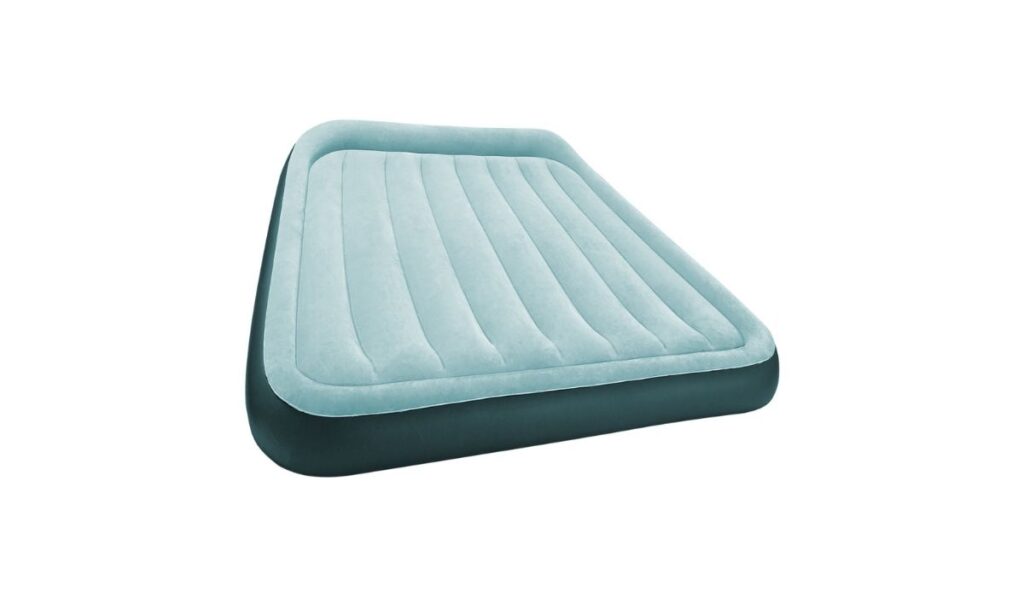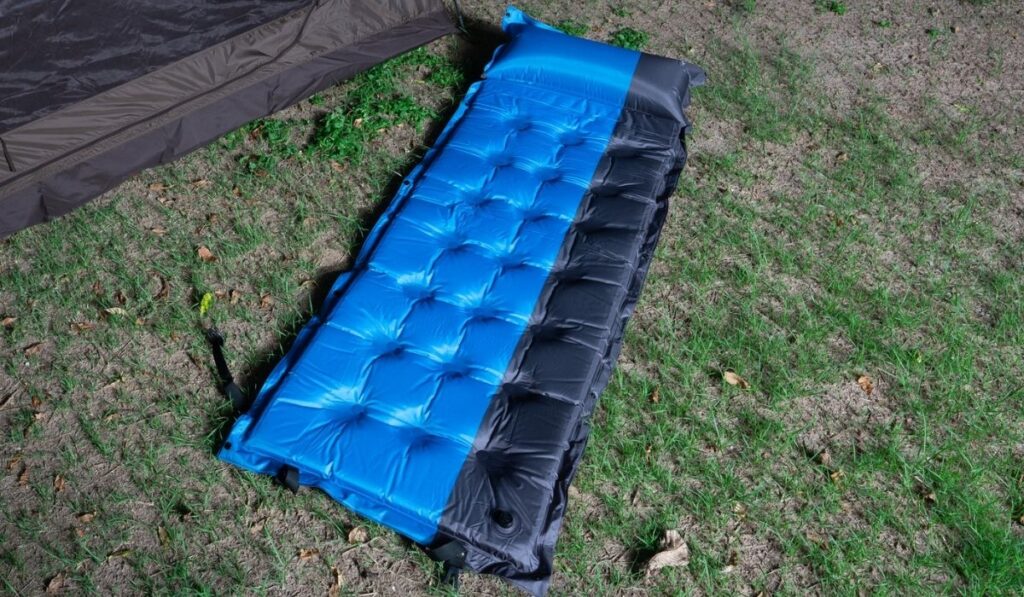Buying a top-rated air mattress is an investment that comes in handy for various occasions, such as while camping, when hosting guests, or as a temporary replacement for a broken mattress at home. But how can you extend the life of this relatively fragile but crucial item?
You can extend the lifespan of an air mattress by storing and transporting it while fully deflated and keeping it in cool, dry spots away from sharp objects. Typically, an air mattress can serve you up to eight years with proper care techniques.
Let’s take a look at a handful of useful tips for extending the lifespan of your air mattress. We’ll also consider how to set up and store the mattress.
How Long Do Air Mattresses Last?

The lifespan of an air mattress depends on a few factors, such as:
- Size of the mattress
- Puncture resistance
- Type of pump
- Durability
- Material
- Frequency of use
The typical air mattress, when used frequently, can last up to two years. However, a top-of-the-line mattress used sparingly can last up to eight years, depending on how well you care for it.
A lower-quality mattress can last longer with proper maintenance and cleaning. The main factor that reduces a mattress’s lifespan is wear and tear.
Alternatively, you could keep buying new air mattresses, which is probably more expensive than taking care of your current mattress.
How to Extend the Life of an Air Mattress
It’s certainly possible to extend the life of an air mattress. First, keep in mind that the degradation of your mattress is not a one-off occurrence; it happens over time.
That’s why the tips discussed below are essential. You should also be consistent in their application. The good news is that these techniques are simple and include everyday home routines.
Here’s a quick overview of some of the tips you can employ to extend the life of your air mattress:
- Proper Inflation
A well-inflated mattress often lasts longer because it guarantees even weight distribution. This ultimately prevents wear and tear to one spot or side of the air mattress. Additionally, filling your mattress to the correct capacity reduces the chances of a puncture.
- Proper Storage
Following your manufacturer’s storage tips can help you maintain your air mattress for longer.
For starters, you should deflate and store it in its bag whenever you’re not using it. You should also ensure it’s free of any wetness or dirt and keep it away from sharp objects. Most importantly, the storage spot should be cool and dry.
If you’re out camping, you should keep your air mattress out of the sun when it’s not in use to prevent further wear. This is because the ultraviolet light from the sun can degrade vinyl and other materials on an air mattress over time.
- Check the Surroundings
Whenever you set up your mattress, you should first check the spot. This will give you time to remove any sharp objects and dry the area if it’s wet.
- Clean the Mattress
It would be best if you cleaned your air mattress regularly to enhance its longevity. Ensure you wash the cover as needed and wipe down the mattress surfaces with a wet cloth. This will help remove any stains or dirt that could lead to leaks or higher chances of punctures.
- Don’t Sit on the Edges.
When people feel tired, they often sit on the mattress’s edge as they relax. However, this damages the mattress and reduces its lifespan.
When you sit in a specific area, pressure is exacted on that spot, increasing the chances of wear and bursts.
- Inspect Before Use
By examining your air mattress before use, you will see any cracks, holes, or other signs of damage and can address them before use.
You’ll also spot mold growing on your mattress, which must be removed carefully if found.
How to Set Up an Air Mattress

Setting up an air mattress is straightforward and requires no advanced technical skills. Here’s a quick step-by-step guide to getting you started:
- Find a flat, firm surface. This will help the mattress distribute air evenly when inflating.
- Unfold the air mattress and lay it on the floor. Try to keep the surface area clear of sharp objects that could puncture it.
- Open the valve on one end of the mattress using your hands, a coin, or a screwdriver. Ensure that you’ve fully opened the valve. It should be perpendicular and not parallel to the mattress’s top panel.
If anything is blocking the airflow through this opening, remove it immediately, following all safety precautions and instructions. - Inflate the mattress with an electric or hand pump as long as it has enough pressure capacity for your specific needs. You can also use your breath, although you might strain too much if your mattress is particularly large.
Additionally, your breath may reduce noise levels during inflation. Choose whichever method best suits your needs. - As you inflate, make sure you adhere to the right capacity. Avoid under- and over-inflating.
How to Properly Store an Air Mattress
Storing your air mattress is crucial if you want it to last longer. Whichever storage spot you choose, it should be dry, cool, and away from direct sunlight or places where children play.
You should then follow these steps during storage:
- Deflate the mattress by opening the air valve. Begin pressing from the bottom towards the valve until all the air has been let out.
- Smoothly fold the mattress.
- Store it in a bag or sturdy container.
- Place the container in a secure, water-free, dry spot.
How to Prevent an Air Mattress From Deflating
Occasionally checking your air mattress for leaks is important because they may cause problems when you least expect them. Here’s how you can avoid such scenarios.
- Patch the punctures.
- Always purchase an air mattress that has a dual pump system, like the SoundAsleep CloudNine Series Mattress (on Amazon).
- Check your surroundings for sharp objects.
- Inflate and deflate the mattress with each night/day of use.
- Check and adhere to the maximum air capacity.
- When inflating, allow the mattress to stretch naturally.
